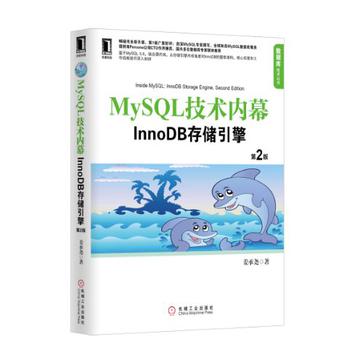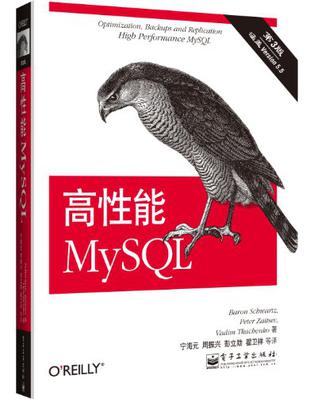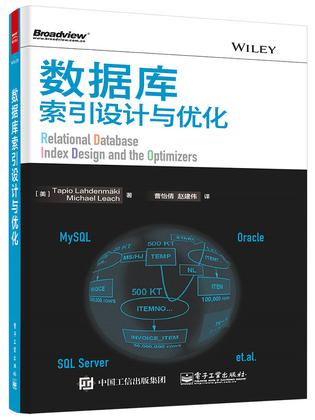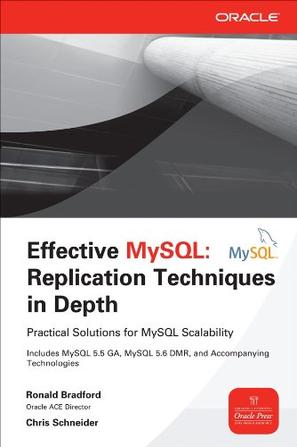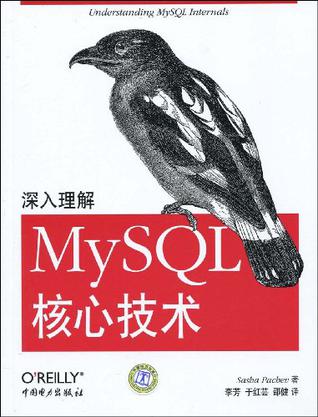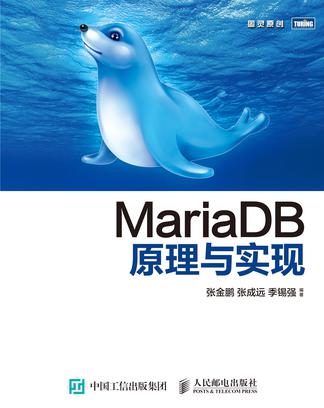第5章 Spring Boot自動(dòng)配置原理
5.1 SpringBoot的核心組件模塊
首先,我們來(lái)簡(jiǎn)單統(tǒng)計(jì)一下SpringBoot核心工程的源碼java文件數(shù)量:
我們cd到spring-boot-autoconfigure工程根目錄下。執(zhí)行
$ tree | grep -c .java$
| 模塊 | java文件數(shù) |
| spring-boot | 551 |
| spring-boot-actuator | 423 |
| spring-boot-autoconfigure | 783 |
| spring-boot-devtools | 169 |
| spring-boot-cli | 180 |
| spring-boot-tools | 355 |
我們可以看到有783個(gè)java文件。spring-boot核心工程有551個(gè)java文件。從上面的java文件數(shù)量大致可以看出,SpringBoot技術(shù)框架的核心組成部分:
spring-boot-autoconfigure spring-boot spring-boot-tools
我們把SpringBoot源碼導(dǎo)入IntelliJ IDEA,查看artifact的全部依賴(lài)關(guān)系。
IDEA有個(gè)Maven Projects窗口,一般在右側(cè)能夠找到,如果沒(méi)有可以從菜單欄打開(kāi):View>Tool Windows>Maven Projects;
選擇要分析的maven module(idea的module相當(dāng)于eclipse的project),右擊show dependencies,會(huì)出來(lái)該module的全部依賴(lài)關(guān)系圖,非常清晰細(xì)致。
例如,spring-boot-starter-freemarker的依賴(lài)圖分析如下:
在spring-boot-build 的pom中,我們可以看到:
<modules> <module>spring-boot-dependencies</module> <module>spring-boot-parent</module> <module>spring-boot-tools</module> <module>spring-boot</module> <module>spring-boot-test</module> <module>spring-boot-autoconfigure</module> <module>spring-boot-test-autoconfigure</module> <module>spring-boot-actuator</module> <module>spring-boot-devtools</module> <module>spring-boot-docs</module> <module>spring-boot-starters</module> <module>spring-boot-actuator-docs</module> <module>spring-boot-cli</module> </modules>
其中,在spring-boot-dependencies中,SpringBoot項(xiàng)目維護(hù)了一份龐大依賴(lài)。這些依賴(lài)的版本都是經(jīng)過(guò)實(shí)踐,測(cè)試通過(guò),不會(huì)發(fā)生依賴(lài)沖突的。就這樣一個(gè)事情,就大大減少了Spring開(kāi)發(fā)過(guò)程中,出現(xiàn)jar包沖突的概率。spring-boot-parent依賴(lài)spring-boot-dependencies。
下面我們簡(jiǎn)要介紹一下SpringBoot子modules。
spring-boot
SpringBoot核心工程。
spring-boot-starters
是SpringBoot的啟動(dòng)服務(wù)工程。
spring-boot-autoconfigure
是SpringBoot實(shí)現(xiàn)自動(dòng)配置的核心工程。
spring-boot-actuator
提供SpringBoot應(yīng)用的外圍支撐性功能。 比如:
- Endpoints,SpringBoot應(yīng)用狀態(tài)監(jiān)控管理
- HealthIndicator,SpringBoot應(yīng)用健康指示表
- 提供metrics支持
- 提供遠(yuǎn)程shell支持
spring-boot-tools
提供了SpringBoot開(kāi)發(fā)者的常用工具集。諸如,spring-boot-gradle-plugin,spring-boot-maven-plugin就是這個(gè)工程里面的。
spring-boot-cli
是Spring Boot命令行交互工具,可用于使用Spring進(jìn)行快速原型搭建。你可以用它直接運(yùn)行Groovy腳本。如果你不喜歡Maven或Gradle,Spring提供了CLI(Command Line Interface)來(lái)開(kāi)發(fā)運(yùn)行Spring應(yīng)用程序。你可以使用它來(lái)運(yùn)行Groovy腳本,甚至編寫(xiě)自定義命令。
5.2 SpringBoot Starters
Spring boot中的starter概念是非常重要的機(jī)制,能夠拋棄以前繁雜的配置,統(tǒng)一集成進(jìn)starter,應(yīng)用者只需要引入starter jar包,spring boot就能自動(dòng)掃描到要加載的信息。
starter讓我們擺脫了各種依賴(lài)庫(kù)的處理,需要配置各種信息的困擾。Spring Boot會(huì)自動(dòng)通過(guò)classpath路徑下的類(lèi)發(fā)現(xiàn)需要的Bean,并織入bean。
例如,如果你想使用Spring和用JPA訪問(wèn)數(shù)據(jù)庫(kù),你只要依賴(lài) spring-boot-starter-data-jpa 即可。
目前,github上spring-boot項(xiàng)目的最新的starter列表spring-boot/spring-boot-starters如下:
spring-boot-starter spring-boot-starter-activemq spring-boot-starter-actuator spring-boot-starter-amqp spring-boot-starter-aop spring-boot-starter-artemis spring-boot-starter-batch spring-boot-starter-cache spring-boot-starter-cloud-connectors spring-boot-starter-data-cassandra spring-boot-starter-data-couchbase spring-boot-starter-data-elasticsearch spring-boot-starter-data-jpa spring-boot-starter-data-ldap spring-boot-starter-data-mongodb spring-boot-starter-data-mongodb-reactive spring-boot-starter-data-neo4j spring-boot-starter-data-redis spring-boot-starter-data-rest spring-boot-starter-data-solr spring-boot-starter-freemarker spring-boot-starter-groovy-templates spring-boot-starter-hateoas spring-boot-starter-integration spring-boot-starter-jdbc spring-boot-starter-jersey spring-boot-starter-jetty spring-boot-starter-jooq spring-boot-starter-jta-atomikos spring-boot-starter-jta-bitronix spring-boot-starter-jta-narayana spring-boot-starter-log4j2 spring-boot-starter-logging spring-boot-starter-mail spring-boot-starter-mobile spring-boot-starter-mustache spring-boot-starter-parent spring-boot-starter-reactor-netty spring-boot-starter-security spring-boot-starter-social-facebook spring-boot-starter-social-linkedin spring-boot-starter-social-twitter spring-boot-starter-test spring-boot-starter-thymeleaf spring-boot-starter-tomcat spring-boot-starter-undertow spring-boot-starter-validation spring-boot-starter-web spring-boot-starter-web-services spring-boot-starter-webflux spring-boot-starter-websocket
(源代碼目錄執(zhí)行shell:l|awk '{print $9}', l|awk '{print $9}'|grep -c 'starter')
共52個(gè)。每個(gè)starter工程里面的pom描述有相應(yīng)的介紹。具體的說(shuō)明,參考官網(wǎng)文檔[1]。關(guān)于這些starters的使用例子,可以參考spring-boot/spring-boot-samples
比如說(shuō),spring-boot-starter是:
Core starter, including auto-configuration support, logging and YAML
這是Spring Boot的核心啟動(dòng)器,包含了自動(dòng)配置、日志和YAML。它的項(xiàng)目依賴(lài)圖如下:
可以看出,這些starter只是配置,真正做自動(dòng)化配置的代碼的是在spring-boot-autoconfigure里面。同時(shí)spring-boot-autoconfigure依賴(lài)spring-boot工程,這個(gè)spring-boot工程是SpringBoot的核心。
SpringBoot會(huì)基于你的classpath中的jar包,試圖猜測(cè)和配置您可能需要的bean。
例如,如果你的classpath中有tomcat-embedded.jar,你可能會(huì)想要一個(gè)TomcatEmbeddedServletContainerFactory Bean (SpringBoot通過(guò)獲取EmbeddedServletContainerFactory來(lái)啟動(dòng)對(duì)應(yīng)的web服務(wù)器。常用的兩個(gè)實(shí)現(xiàn)類(lèi)是TomcatEmbeddedServletContainerFactory和JettyEmbeddedServletContainerFactory)。
其他的所有基于Spring Boot的starter都依賴(lài)這個(gè)spring-boot-starter。比如說(shuō)spring-boot-starter-actuator的依賴(lài)樹(shù),如下圖:
5.3 @EnableAutoConfiguration自動(dòng)配置原理
通過(guò)@EnableAutoConfiguration啟用Spring應(yīng)用程序上下文的自動(dòng)配置,這個(gè)注解會(huì)導(dǎo)入一個(gè)EnableAutoConfigurationImportSelector的類(lèi),而這個(gè)類(lèi)會(huì)去讀取一個(gè)spring.factories下key為EnableAutoConfiguration對(duì)應(yīng)的全限定名的值。
這個(gè)spring.factories里面配置的那些類(lèi),主要作用是告訴Spring Boot這個(gè)stareter所需要加載的那些xxxAutoConfiguration類(lèi),也就是你真正的要自動(dòng)注冊(cè)的那些bean或功能。然后,我們實(shí)現(xiàn)一個(gè)spring.factories指定的類(lèi),標(biāo)上@Configuration注解,一個(gè)starter就定義完了。
如果想從自己的starter種讀取應(yīng)用的starter工程的配置,只需要在入口類(lèi)上加上如下注解即可:
@EnableConfigurationProperties(MyProperties.class)
讀取spring.factories文件的實(shí)現(xiàn)
是通過(guò)org.springframework.core.io.support.SpringFactoriesLoader實(shí)現(xiàn)。
SpringFactoriesLoader的實(shí)現(xiàn)類(lèi)似于SPI(Service Provider Interface,在java.util.ServiceLoader的文檔里有比較詳細(xì)的介紹。java SPI提供一種服務(wù)發(fā)現(xiàn)機(jī)制,為某個(gè)接口尋找服務(wù)實(shí)現(xiàn)的機(jī)制。有點(diǎn)類(lèi)似IOC的思想,就是將裝配的控制權(quán)移到程序之外,在模塊化設(shè)計(jì)中這個(gè)機(jī)制尤其重要[3])。
SpringFactoriesLoader會(huì)加載classpath下所有JAR文件里面的META-INF/spring.factories文件。
其中加載spring.factories文件的代碼在loadFactoryNames方法里:
public static final String FACTORIES_RESOURCE_LOCATION = "META-INF/spring.factories"; .... public static List<String> loadFactoryNames(Class<?> factoryClass, ClassLoader classLoader) { String factoryClassName = factoryClass.getName(); try { Enumeration<URL> urls = (classLoader != null ? classLoader.getResources(FACTORIES_RESOURCE_LOCATION) : ClassLoader.getSystemResources(FACTORIES_RESOURCE_LOCATION)); List<String> result = new ArrayList<>(); while (urls.hasMoreElements()) { URL url = urls.nextElement(); Properties properties = PropertiesLoaderUtils.loadProperties(new UrlResource(url)); String factoryClassNames = properties.getProperty(factoryClassName); result.addAll(Arrays.asList(StringUtils.commaDelimitedListToStringArray(factoryClassNames))); } return result; } catch (IOException ex) { throw new IllegalArgumentException("Unable to load [" + factoryClass.getName() + "] factories from location [" + FACTORIES_RESOURCE_LOCATION + "]", ex); } }
通過(guò)org.springframework.boot.autoconfigure.AutoConfigurationImportSelector里面的getCandidateConfigurations方法,獲取到候選類(lèi)的名字List<String>。該方法代碼如下:
protected List<String> getCandidateConfigurations(AnnotationMetadata metadata, AnnotationAttributes attributes) { List<String> configurations = SpringFactoriesLoader.loadFactoryNames( getSpringFactoriesLoaderFactoryClass(), getBeanClassLoader()); Assert.notEmpty(configurations, "No auto configuration classes found in META-INF/spring.factories. If you " + "are using a custom packaging, make sure that file is correct."); return configurations; }
其中,getSpringFactoriesLoaderFactoryClass()方法直接返回的是EnableAutoConfiguration.class, 代碼如下:
protected Class<?> getSpringFactoriesLoaderFactoryClass() { return EnableAutoConfiguration.class; }
所以,getCandidateConfigurations方法里面的這段代碼:
List<String> configurations = SpringFactoriesLoader.loadFactoryNames( getSpringFactoriesLoaderFactoryClass(), getBeanClassLoader());
會(huì)過(guò)濾出key為org.springframework.boot.autoconfigure.EnableAutoConfiguration的全限定名對(duì)應(yīng)的值。全限定名都使用如下命名方法:
包名.外部類(lèi)名 包名.外部類(lèi)名$內(nèi)部類(lèi)名 e.g: org.springframework.boot.autoconfigure.context.PropertyPlaceholderAutoConfiguration
SpringBoot中的META-INF/spring.factories(完整路徑:spring-boot/spring-boot-autoconfigure/src/main/resources/META-INF/spring.factories)中關(guān)于EnableAutoConfiguration的這段配置如下:
# Auto Configure org.springframework.boot.autoconfigure.EnableAutoConfiguration=\ org.springframework.boot.autoconfigure.admin.SpringApplicationAdminJmxAutoConfiguration,\ org.springframework.boot.autoconfigure.aop.AopAutoConfiguration,\ org.springframework.boot.autoconfigure.amqp.RabbitAutoConfiguration,\ org.springframework.boot.autoconfigure.batch.BatchAutoConfiguration,\ org.springframework.boot.autoconfigure.cache.CacheAutoConfiguration,\ org.springframework.boot.autoconfigure.cassandra.CassandraAutoConfiguration,\ org.springframework.boot.autoconfigure.cloud.CloudAutoConfiguration,\ org.springframework.boot.autoconfigure.context.ConfigurationPropertiesAutoConfiguration,\ org.springframework.boot.autoconfigure.context.MessageSourceAutoConfiguration,\ org.springframework.boot.autoconfigure.context.PropertyPlaceholderAutoConfiguration,\ org.springframework.boot.autoconfigure.couchbase.CouchbaseAutoConfiguration,\ org.springframework.boot.autoconfigure.dao.PersistenceExceptionTranslationAutoConfiguration,\ org.springframework.boot.autoconfigure.data.cassandra.CassandraDataAutoConfiguration,\ org.springframework.boot.autoconfigure.data.cassandra.CassandraRepositoriesAutoConfiguration,\ org.springframework.boot.autoconfigure.data.couchbase.CouchbaseDataAutoConfiguration,\ org.springframework.boot.autoconfigure.data.couchbase.CouchbaseRepositoriesAutoConfiguration,\ org.springframework.boot.autoconfigure.data.elasticsearch.ElasticsearchAutoConfiguration,\ org.springframework.boot.autoconfigure.data.elasticsearch.ElasticsearchDataAutoConfiguration,\ org.springframework.boot.autoconfigure.data.elasticsearch.ElasticsearchRepositoriesAutoConfiguration,\ org.springframework.boot.autoconfigure.data.jpa.JpaRepositoriesAutoConfiguration,\ org.springframework.boot.autoconfigure.data.ldap.LdapDataAutoConfiguration,\ org.springframework.boot.autoconfigure.data.ldap.LdapRepositoriesAutoConfiguration,\ org.springframework.boot.autoconfigure.data.mongo.MongoDataAutoConfiguration,\ org.springframework.boot.autoconfigure.data.mongo.MongoRepositoriesAutoConfiguration,\ org.springframework.boot.autoconfigure.data.mongo.ReactiveMongoDataAutoConfiguration,\ org.springframework.boot.autoconfigure.data.mongo.ReactiveMongoRepositoriesAutoConfiguration,\ org.springframework.boot.autoconfigure.data.neo4j.Neo4jDataAutoConfiguration,\ org.springframework.boot.autoconfigure.data.neo4j.Neo4jRepositoriesAutoConfiguration,\ org.springframework.boot.autoconfigure.data.solr.SolrRepositoriesAutoConfiguration,\ org.springframework.boot.autoconfigure.data.redis.RedisAutoConfiguration,\ org.springframework.boot.autoconfigure.data.redis.RedisRepositoriesAutoConfiguration,\ org.springframework.boot.autoconfigure.data.rest.RepositoryRestMvcAutoConfiguration,\ org.springframework.boot.autoconfigure.data.web.SpringDataWebAutoConfiguration,\ org.springframework.boot.autoconfigure.elasticsearch.jest.JestAutoConfiguration,\ org.springframework.boot.autoconfigure.flyway.FlywayAutoConfiguration,\ org.springframework.boot.autoconfigure.freemarker.FreeMarkerAutoConfiguration,\ org.springframework.boot.autoconfigure.gson.GsonAutoConfiguration,\ org.springframework.boot.autoconfigure.h2.H2ConsoleAutoConfiguration,\ org.springframework.boot.autoconfigure.hateoas.HypermediaAutoConfiguration,\ org.springframework.boot.autoconfigure.hazelcast.HazelcastAutoConfiguration,\ org.springframework.boot.autoconfigure.hazelcast.HazelcastJpaDependencyAutoConfiguration,\ org.springframework.boot.autoconfigure.http.HttpMessageConvertersAutoConfiguration,\ org.springframework.boot.autoconfigure.info.ProjectInfoAutoConfiguration,\ org.springframework.boot.autoconfigure.integration.IntegrationAutoConfiguration,\ org.springframework.boot.autoconfigure.jackson.JacksonAutoConfiguration,\ org.springframework.boot.autoconfigure.jdbc.DataSourceAutoConfiguration,\ org.springframework.boot.autoconfigure.jdbc.JdbcTemplateAutoConfiguration,\ org.springframework.boot.autoconfigure.jdbc.JndiDataSourceAutoConfiguration,\ org.springframework.boot.autoconfigure.jdbc.XADataSourceAutoConfiguration,\ org.springframework.boot.autoconfigure.jdbc.DataSourceTransactionManagerAutoConfiguration,\ org.springframework.boot.autoconfigure.jms.JmsAutoConfiguration,\ org.springframework.boot.autoconfigure.jmx.JmxAutoConfiguration,\ org.springframework.boot.autoconfigure.jms.JndiConnectionFactoryAutoConfiguration,\ org.springframework.boot.autoconfigure.jms.activemq.ActiveMQAutoConfiguration,\ org.springframework.boot.autoconfigure.jms.artemis.ArtemisAutoConfiguration,\ org.springframework.boot.autoconfigure.groovy.template.GroovyTemplateAutoConfiguration,\ org.springframework.boot.autoconfigure.jersey.JerseyAutoConfiguration,\ org.springframework.boot.autoconfigure.jooq.JooqAutoConfiguration,\ org.springframework.boot.autoconfigure.kafka.KafkaAutoConfiguration,\ org.springframework.boot.autoconfigure.ldap.embedded.EmbeddedLdapAutoConfiguration,\ org.springframework.boot.autoconfigure.ldap.LdapAutoConfiguration,\ org.springframework.boot.autoconfigure.liquibase.LiquibaseAutoConfiguration,\ org.springframework.boot.autoconfigure.mail.MailSenderAutoConfiguration,\ org.springframework.boot.autoconfigure.mail.MailSenderValidatorAutoConfiguration,\ org.springframework.boot.autoconfigure.mobile.DeviceResolverAutoConfiguration,\ org.springframework.boot.autoconfigure.mobile.DeviceDelegatingViewResolverAutoConfiguration,\ org.springframework.boot.autoconfigure.mobile.SitePreferenceAutoConfiguration,\ org.springframework.boot.autoconfigure.mongo.embedded.EmbeddedMongoAutoConfiguration,\ org.springframework.boot.autoconfigure.mongo.MongoAutoConfiguration,\ org.springframework.boot.autoconfigure.mongo.ReactiveMongoAutoConfiguration,\ org.springframework.boot.autoconfigure.mustache.MustacheAutoConfiguration,\ org.springframework.boot.autoconfigure.orm.jpa.HibernateJpaAutoConfiguration,\ org.springframework.boot.autoconfigure.reactor.core.ReactorCoreAutoConfiguration,\ org.springframework.boot.autoconfigure.security.SecurityAutoConfiguration,\ org.springframework.boot.autoconfigure.security.SecurityFilterAutoConfiguration,\ org.springframework.boot.autoconfigure.security.FallbackWebSecurityAutoConfiguration,\ org.springframework.boot.autoconfigure.security.oauth2.OAuth2AutoConfiguration,\ org.springframework.boot.autoconfigure.sendgrid.SendGridAutoConfiguration,\ org.springframework.boot.autoconfigure.session.SessionAutoConfiguration,\ org.springframework.boot.autoconfigure.social.SocialWebAutoConfiguration,\ org.springframework.boot.autoconfigure.social.FacebookAutoConfiguration,\ org.springframework.boot.autoconfigure.social.LinkedInAutoConfiguration,\ org.springframework.boot.autoconfigure.social.TwitterAutoConfiguration,\ org.springframework.boot.autoconfigure.solr.SolrAutoConfiguration,\ org.springframework.boot.autoconfigure.thymeleaf.ThymeleafAutoConfiguration,\ org.springframework.boot.autoconfigure.transaction.TransactionAutoConfiguration,\ org.springframework.boot.autoconfigure.transaction.jta.JtaAutoConfiguration,\ org.springframework.boot.autoconfigure.validation.ValidationAutoConfiguration,\ org.springframework.boot.autoconfigure.web.client.RestTemplateAutoConfiguration,\ org.springframework.boot.autoconfigure.web.reactive.HttpHandlerAutoConfiguration,\ org.springframework.boot.autoconfigure.web.reactive.ReactiveWebServerAutoConfiguration,\ org.springframework.boot.autoconfigure.web.reactive.WebFluxAnnotationAutoConfiguration,\ org.springframework.boot.autoconfigure.web.servlet.DispatcherServletAutoConfiguration,\ org.springframework.boot.autoconfigure.web.servlet.ServletWebServerFactoryAutoConfiguration,\ org.springframework.boot.autoconfigure.web.servlet.error.ErrorMvcAutoConfiguration,\ org.springframework.boot.autoconfigure.web.servlet.HttpEncodingAutoConfiguration,\ org.springframework.boot.autoconfigure.web.servlet.MultipartAutoConfiguration,\ org.springframework.boot.autoconfigure.web.servlet.WebMvcAutoConfiguration,\ org.springframework.boot.autoconfigure.websocket.WebSocketAutoConfiguration,\ org.springframework.boot.autoconfigure.websocket.WebSocketMessagingAutoConfiguration,\ org.springframework.boot.autoconfigure.webservices.WebServicesAutoConfiguration
當(dāng)然了,這些AutoConfiguration不是所有都會(huì)加載的,會(huì)根據(jù)AutoConfiguration上的@ConditionalOnClass等條件,再進(jìn)一步判斷是否加載。我們下文通過(guò)FreeMarkerAutoConfiguration實(shí)例來(lái)分析整個(gè)自動(dòng)配置的過(guò)程。
5.4 FreeMarkerAutoConfiguration自動(dòng)配置的實(shí)例分析
我們首先看spring-boot-starter-freemarker工程,目錄結(jié)構(gòu)如下:
. ├── pom.xml ├── spring-boot-starter-freemarker.iml └── src └── main └── resources └── META-INF └── spring.provides 4 directories, 3 files
我們可以看出,這個(gè)工程沒(méi)有任何Java代碼,只有兩個(gè)文件:pom.xml跟spring.provides。starter本身在你的應(yīng)用程序中實(shí)際上是空的。
其中,
spring.provides文件
provides: freemarker,spring-context-support
主要是給這個(gè)starter起個(gè)好區(qū)分的名字。
Spring Boot 通過(guò)starter對(duì)項(xiàng)目的依賴(lài)進(jìn)行統(tǒng)一管理. starter利用了maven的傳遞依賴(lài)解析機(jī)制,把常用庫(kù)聚合在一起, 組成了針對(duì)特定功能而定制的依賴(lài)starter。
我們可以使用IDEA提供的maven依賴(lài)圖分析的功能(如下圖),得到spring-boot-starter-freemarker依賴(lài)的module。

IDEA提供的maven依賴(lài)圖分析

spring-boot-starter-freemarker依賴(lài)的module
從上面的依賴(lài)圖,我們可以清晰看出其間依賴(lài)關(guān)系。
當(dāng)Spring Boot Application中自動(dòng)配置EnableAutoConfiguration的相關(guān)類(lèi)執(zhí)行完畢之后,Spring Boot會(huì)進(jìn)一步解析對(duì)應(yīng)類(lèi)的配置信息。如果我們配置了spring-boot-starter-freemarker ,maven就會(huì)通過(guò)這個(gè)starter所依賴(lài)的spring-boot-autoconfigure,自動(dòng)傳遞到spring-boot-autoconfigure工程中。
我們來(lái)簡(jiǎn)單分析一下spring-boot-autoconfigure工程的架構(gòu)。
其中,F(xiàn)reeMarker的自動(dòng)配置類(lèi)是org.springframework.boot.autoconfigure.freemarker.FreeMarkerAutoConfiguration。
下面我們來(lái)簡(jiǎn)要分析一下FreeMarkerAutoConfiguration這個(gè)類(lèi)。
在FreeMarkerAutoConfiguration類(lèi)上面有四行注解:
@Configuration @ConditionalOnClass({ freemarker.template.Configuration.class, FreeMarkerConfigurationFactory.class }) @AutoConfigureAfter(WebMvcAutoConfiguration.class) @EnableConfigurationProperties(FreeMarkerProperties.class) public class FreeMarkerAutoConfiguration { ... }
其中,
(1)@Configuration,是org.springframework.context.annotation包里面的注解。這么說(shuō)吧,用@Configuration注解該類(lèi),等價(jià) 與XML中配置beans;用@Bean標(biāo)注方法等價(jià)于XML中配置bean。
(2)@ConditionalOnClass,org.springframework.boot.autoconfigure.condition包里面的注解。意思是當(dāng)類(lèi)路徑下有指定的類(lèi)的條件下,才會(huì)去注冊(cè)被標(biāo)注的類(lèi)為一個(gè)bean。在上面的代碼中的意思就是,當(dāng)類(lèi)路徑中有freemarker.template.Configuration.class,FreeMarkerConfigurationFactory.class兩個(gè)類(lèi)的時(shí)候,才會(huì)實(shí)例化FreeMarkerAutoConfiguration這個(gè)Bean。
(3)@AutoConfigureAfter,org.springframework.boot.autoconfigure包里面的注解。這個(gè)通過(guò)注解的名字意思就可以知道,當(dāng)WebMvcAutoConfiguration.class這個(gè)類(lèi)實(shí)例化完畢,才能實(shí)例化FreeMarkerAutoConfiguration(有個(gè)先后順序)。SpringBoot使用@ AutoConfigureBefore、@AutoConfigureAfter注解來(lái)定義這些配置類(lèi)的載入順序。
(4)@EnableConfigurationProperties,表示啟動(dòng)對(duì)FreeMarkerProperties.class的內(nèi)嵌配置支持,自動(dòng)將FreeMarkerProperties注冊(cè)為一個(gè)bean。這個(gè)FreeMarkerProperties類(lèi)里面就是關(guān)于FreeMarker屬性的配置:
@ConfigurationProperties(prefix = "spring.freemarker") public class FreeMarkerProperties extends AbstractTemplateViewResolverProperties { public static final String DEFAULT_TEMPLATE_LOADER_PATH = "classpath:/templates/"; public static final String DEFAULT_PREFIX = ""; public static final String DEFAULT_SUFFIX = ".ftl"; /** * Well-known FreeMarker keys which will be passed to FreeMarker's Configuration. */ private Map<String, String> settings = new HashMap<>(); /** * Comma-separated list of template paths. */ private String[] templateLoaderPath = new String[] { DEFAULT_TEMPLATE_LOADER_PATH }; /** * Prefer file system access for template loading. File system access enables hot * detection of template changes. */ private boolean preferFileSystemAccess = true; public FreeMarkerProperties() { super(DEFAULT_PREFIX, DEFAULT_SUFFIX); } public Map<String, String> getSettings() { return this.settings; } public void setSettings(Map<String, String> settings) { this.settings = settings; } public String[] getTemplateLoaderPath() { return this.templateLoaderPath; } public boolean isPreferFileSystemAccess() { return this.preferFileSystemAccess; } public void setPreferFileSystemAccess(boolean preferFileSystemAccess) { this.preferFileSystemAccess = preferFileSystemAccess; } public void setTemplateLoaderPath(String... templateLoaderPaths) { this.templateLoaderPath = templateLoaderPaths; } }
綜上,當(dāng)(1)(2)兩個(gè)條件滿足時(shí),才會(huì)繼續(xù)(3)(4)的動(dòng)作,同時(shí)注冊(cè)FreeMarkerAutoConfiguration這個(gè)Bean。該類(lèi)的結(jié)構(gòu)如下圖:
我們來(lái)看其內(nèi)部類(lèi)FreeMarkerWebConfiguration的代碼:
@Configuration @ConditionalOnClass(Servlet.class) @ConditionalOnWebApplication(type = Type.SERVLET) public static class FreeMarkerWebConfiguration extends FreeMarkerConfiguration { @Bean @ConditionalOnMissingBean(FreeMarkerConfig.class) public FreeMarkerConfigurer freeMarkerConfigurer() { FreeMarkerConfigurer configurer = new FreeMarkerConfigurer(); applyProperties(configurer); return configurer; } @Bean public freemarker.template.Configuration freeMarkerConfiguration( FreeMarkerConfig configurer) { return configurer.getConfiguration(); } @Bean @ConditionalOnMissingBean(name = "freeMarkerViewResolver") @ConditionalOnProperty(name = "spring.freemarker.enabled", matchIfMissing = true) public FreeMarkerViewResolver freeMarkerViewResolver() { FreeMarkerViewResolver resolver = new FreeMarkerViewResolver(); this.properties.applyToViewResolver(resolver); return resolver; } @Bean @ConditionalOnMissingBean @ConditionalOnEnabledResourceChain public ResourceUrlEncodingFilter resourceUrlEncodingFilter() { return new ResourceUrlEncodingFilter(); } }
其中,
(1)@ConditionalOnWebApplication(type = Type.SERVLET), 是當(dāng)該應(yīng)用是基于Servlet的Web應(yīng)用時(shí)。
(2)@ConditionalOnMissingBean(name = "freeMarkerViewResolver"),是當(dāng)Spring容器中不存在freeMarkerViewResolver的Bean時(shí)。
(3)@ConditionalOnProperty(name = "spring.freemarker.enabled", matchIfMissing = true),指定的spring.freemarker.enabled屬性是否有。如果沒(méi)有(IfMissing),設(shè)為true。
當(dāng)(1)(2)(3)三個(gè)條件都滿足,則注冊(cè)freeMarkerViewResolver這個(gè)Bean。
我們也可以自定義我們自己的my-starter,以及實(shí)現(xiàn)對(duì)應(yīng)的@MyEnableAutoConfiguration。SpringBoot有很多第三方starter,其自動(dòng)配置的原理基本都是這樣,比如mybatis-spring-boot-starter的MybatisAutoConfiguration,閱讀源碼https://github.com/mybatis/spring-boot-starter[4]。
上面文字描述了這么多,再用一張形象生動(dòng)的圖來(lái)說(shuō)明[5]:

SpringBoot Autoconfigure 工作原理圖
5.5 spring.factories與定義應(yīng)用程序的初始化行為
上面說(shuō)了這么多,講的都是讀取properties文件中key為org.springframework.boot.autoconfigure.EnableAutoConfiguration的全限定名對(duì)應(yīng)的值。SpringBoot內(nèi)部還有許多其他的key用于過(guò)濾得到需要加載的類(lèi)。
# Initializers org.springframework.context.ApplicationContextInitializer=\ org.springframework.boot.autoconfigure.SharedMetadataReaderFactoryContextInitializer,\ org.springframework.boot.autoconfigure.logging.AutoConfigurationReportLoggingInitializer # Application Listeners org.springframework.context.ApplicationListener=\ org.springframework.boot.autoconfigure.BackgroundPreinitializer # Auto Configuration Import Listeners org.springframework.boot.autoconfigure.AutoConfigurationImportListener=\ org.springframework.boot.autoconfigure.condition.ConditionEvaluationReportAutoConfigurationImportListener # Auto Configuration Import Filters org.springframework.boot.autoconfigure.AutoConfigurationImportFilter=\ org.springframework.boot.autoconfigure.condition.OnClassCondition # Failure analyzers org.springframework.boot.diagnostics.FailureAnalyzer=\ org.springframework.boot.autoconfigure.diagnostics.analyzer.NoSuchBeanDefinitionFailureAnalyzer,\ org.springframework.boot.autoconfigure.jdbc.DataSourceBeanCreationFailureAnalyzer,\ org.springframework.boot.autoconfigure.jdbc.HikariDriverConfigurationFailureAnalyzer # Template availability providers org.springframework.boot.autoconfigure.template.TemplateAvailabilityProvider=\ org.springframework.boot.autoconfigure.freemarker.FreeMarkerTemplateAvailabilityProvider,\ org.springframework.boot.autoconfigure.mustache.MustacheTemplateAvailabilityProvider,\ org.springframework.boot.autoconfigure.groovy.template.GroovyTemplateAvailabilityProvider,\ org.springframework.boot.autoconfigure.thymeleaf.ThymeleafTemplateAvailabilityProvider,\ org.springframework.boot.autoconfigure.web.servlet.JspTemplateAvailabilityProvider
這些key仍然是定義在spring-boot/spring-boot-autoconfigure/src/main/resources/META-INF/spring.factories文件中。
還有對(duì)應(yīng)的用于測(cè)試的自動(dòng)配置,在
spring-boot/spring-boot-test-autoconfigure/src/main/resources/META-INF/spring.factories文件中定義。
另外,我們使用spring.factories里還可以定制應(yīng)用程序的初始化行為。這樣我們就可以在應(yīng)用程序載入前操縱Spring的應(yīng)用程序上下文ApplicationContext。
例如,可以使用ConfigurableApplicationContext類(lèi)的addApplicationListener()方法,在應(yīng)用上下文ApplicationContext中創(chuàng)建監(jiān)聽(tīng)器。
自動(dòng)配置運(yùn)行日志報(bào)告功能就是這么實(shí)現(xiàn)的。我們來(lái)看在spring.factories中,Initializers一段的配置:
# Initializers org.springframework.context.ApplicationContextInitializer=\ org.springframework.boot.autoconfigure.SharedMetadataReaderFactoryContextInitializer,\ org.springframework.boot.autoconfigure.logging.AutoConfigurationReportLoggingInitializer
其中,AutoConfigurationReportLoggingInitializer監(jiān)聽(tīng)到系統(tǒng)事件時(shí),比如上下文刷新ContextRefreshedEvent或應(yīng)用程序啟動(dòng)故障ApplicationFailedEvent之類(lèi)的事件,Spring Boot可以做一些事情。這里說(shuō)的代碼在AutoConfigurationReportLoggingInitializer.AutoConfigurationReportListener里面。關(guān)于支持的事件類(lèi)型supportsEventType的如下:
private class AutoConfigurationReportListener implements GenericApplicationListener { ... @Override public boolean supportsEventType(ResolvableType resolvableType) { Class<?> type = resolvableType.getRawClass(); if (type == null) { return false; } return ContextRefreshedEvent.class.isAssignableFrom(type) || ApplicationFailedEvent.class.isAssignableFrom(type); } @Override public boolean supportsSourceType(Class<?> sourceType) { return true; } @Override public void onApplicationEvent(ApplicationEvent event) { AutoConfigurationReportLoggingInitializer.this.onApplicationEvent(event); } }
要以調(diào)試模式啟動(dòng)應(yīng)用程序,可以使用-Ddebug標(biāo)識(shí),或者在application.properties文件這添加屬性debug= true。這樣,當(dāng)我們以調(diào)試模式啟動(dòng)應(yīng)用程序時(shí),SpringBoot就可以幫助我們創(chuàng)建自動(dòng)配置的運(yùn)行報(bào)告。對(duì)于每個(gè)自動(dòng)配置,通過(guò)報(bào)告我們可以看到它啟動(dòng)或失敗的原因。 這個(gè)報(bào)告內(nèi)容格式大致如下:
========================= AUTO-CONFIGURATION REPORT ========================= Positive matches: ----------------- DataSourceAutoConfiguration matched: - @ConditionalOnClass found required classes 'javax.sql.DataSource', 'org.springframework.jdbc.datasource.embedded.EmbeddedDatabaseType'; @ConditionalOnMissingClass did not find unwanted class (OnClassCondition) DataSourceAutoConfiguration#dataSourceInitializer matched: - @ConditionalOnMissingBean (types: org.springframework.boot.autoconfigure.jdbc.DataSourceInitializer; SearchStrategy: all) did not find any beans (OnBeanCondition) DataSourceAutoConfiguration.PooledDataSourceConfiguration matched: - AnyNestedCondition 2 matched 0 did not; NestedCondition on DataSourceAutoConfiguration.PooledDataSourceCondition.PooledDataSourceAvailable PooledDataSource found supported DataSource; NestedCondition on DataSourceAutoConfiguration.PooledDataSourceCondition.ExplicitType @ConditionalOnProperty (spring.datasource.type) matched (DataSourceAutoConfiguration.PooledDataSourceCondition) - @ConditionalOnMissingBean (types: javax.sql.DataSource,javax.sql.XADataSource; SearchStrategy: all) did not find any beans (OnBeanCondition) ... Exclusions: ----------- None Unconditional classes: ---------------------- org.springframework.boot.autoconfigure.web.WebClientAutoConfiguration org.springframework.boot.autoconfigure.context.PropertyPlaceholderAutoConfiguration org.springframework.boot.autoconfigure.context.ConfigurationPropertiesAutoConfiguration org.springframework.boot.autoconfigure.info.ProjectInfoAutoConfiguration
除了SpringBoot官方提供的starter外,還有社區(qū)貢獻(xiàn)的很多常用的第三方starter,列表可參考[2]。
另外,國(guó)內(nèi)很多公司使用RPC框架dubbo,關(guān)于SpringBoot集成dubbo,可參考:https://github.com/linux-china/spring-boot-dubbo。
參考資料:
1.http://docs.spring.io/spring-boot/docs/current/reference/htmlsingle/#using-boot-starter
2.https://github.com/spring-projects/spring-boot/tree/master/spring-boot-starters
3.http://www.cnblogs.com/javaee6/p/3714719.html
4.https://github.com/mybatis/spring-boot-starter
5.https://afoo.me/posts/2015-07-09-how-spring-boot-works.html
